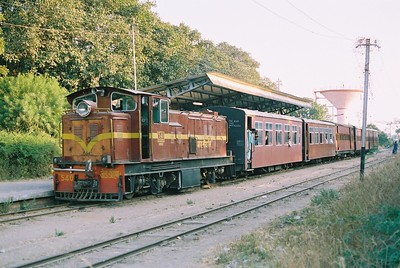Can there be a market within a market? In the case of railway platform shops, there is.
In the larger railway stations operated by the Indian Railways, each platform has its own market of retail shops catering to the needs of travellers. Even if the character of these small markets embedded within the larger ecosystem of usual markets is different, their challenges are similar and worth examining.
The market for retail stalls on a railway platform has high barriers to entry, much less competition, and is much more challenging to run and make a profit in. From the standard textbook economics view, it is a non-homogenous, monopolistic competitive market. Products are hard to distinguish, and there are fewer sellers. To enter this market, a seller must bid for a license through a railway run tendering system, and a buyer must obtain a platform ticket or a train reservation.
Like traditional markets, buyers and sellers in the platform market too, arrive at prices through a process of bargaining. An equilibrium for price and quality is struck somewhere in between buyers seeking quality goods at affordable prices and sellers aiming for healthy margins by sourcing cheap inventory. This equilibrium keeps shifting, just like in any other market. But there are several challenges that a shop on a railway platform encounter.
The first challenge is the choice of location. The exact spot of location has to be bid for. And unlike mobile vendors, once locked-in, it’s not easy to move even if there are strategic gains to be made from changing the shop’s location. The space and availability of locations is highly scarce too when compared to the markets outside.
The second challenge is that these business setups can never have the advantage of insuring themselves. Even if they rented their shop space from a legitimate entity like the government run Indian railways, they still don’t qualify as “pakka” enough, which is a prerequisite for securing insurance. Any inventory loss due to theft, damage, or natural events is borne entirely by the shop owner or leaseholder.
A third and important challenge is for a small and nimble business to have to deal with an exclusive platform regulator: Divisional Railway Manager along with the railway police. Like many other small regulators and street level bureaucracy, platform shops owe them protection money or risk action taken against them on false pretence.
These challenges lead to several negative consequences where buyers, sellers, and regulators get locked into a game of rock-paper-scissors. For any player to win, another must lose. Unlike a positive sum game, where everyone wins.
The regulator can uproot the seller at any point of time. And the barriers and challenges of the sellers make them want to squeeze out consumers, who can often be in a rush. But the rock-paper-scissor analogy breaks in the relationship between the regulator on one side and the consumers and sellers, on the other side. The dominant player in this game is always the rock or the regulator, winning at the cost of sellers and consumers, both.
To push the analogy further, the regulator as the rock can go really heavy on the sellers, by increasing tenancy costs, provoking fake inspections, or threatening to cancel licenses. These costs reduce the incentive for the seller to offer high quality goods at lower prices for the large customer base of railway commuters.
It’s also worth examining how bribes between the regulator and the seller are arrived at. In this transaction, in many instances there can be another third party—the contractor—involved too.
These contractors who win tenders are not the actual shopkeepers but individuals or firms who lease out shop space to other sellers. In some Tier-1 city railway stations, these rents are high and charged to sellers weekly or even daily. It could be that some sellers renting at major stations do earn higher profits and are able to afford high rents. However, many of them face the trouble of inconsistent incomes which makes it difficult to sustain the daily rent and operations.
Another big challenge is what platform sellers consider “illegal vending”. Outside hawkers may just manage to sell goods without incurring the costs that platform businesses incur, making their livelihoods tougher. In some instances these illegal outside vendors can be hand-in-glove with the regulatory bodies too, like in the case of Shahjahanpur railway station, as found out in 2016. About two hundred vendors paid a small fee to the platform regulators to sell goods without incurring the tenancy cost imposed on platform sellers.
There is no recourse to such mistreatments, either. Effective grievance redressal mechanisms are missing. While customers may find it easy to file complaints—whether or not they are resolved is another matter—inspectors exhibit personal biases and interests. In this process, they tend to forget that shopkeepers are also members of the public, entitled to fairness and protection.
But just like in any other market, all these factors affect the level of equilibrium and behaviours of customers, sellers, and regulators. The outcome is sub-optimal for both the buyers and sellers.
Post Disclaimer
The opinions expressed in this essay are those of the authors. They do not purport to reflect the opinions or views of CCS.





